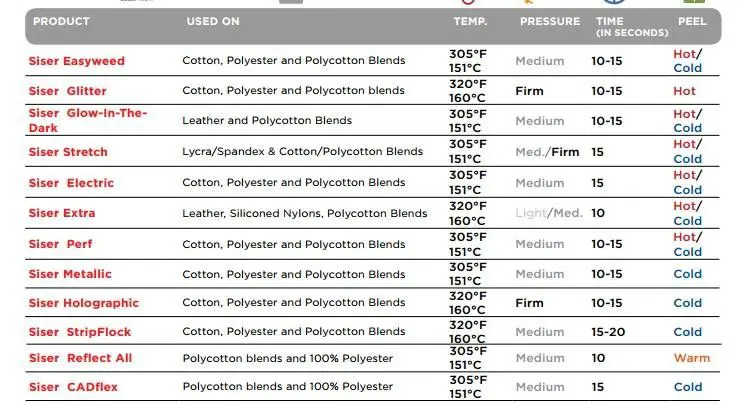The best T-shirt printing materials guide
The best T-shirt printing materials come in different may functions and shapes. Without these printing materials, you cannot do your printing.
We have different types of best T-shirt printing materials on the market. To get the right materials, you should do your research first.
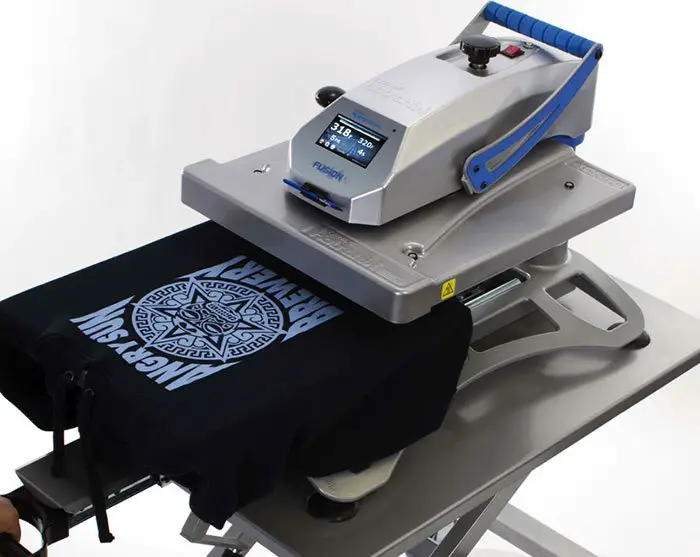
When it comes to printing, you do not buy the best T-shirt printing materials without considering what you want to achieve.
You have to make your checklist before you can understand what you need to add or substrate from your buying list.
Facts about the best T-shirt printing materials
One of the fashion trends that have been quite popular for some time now is prints on T-shirts. That is the reason why we talk more about the best T-shirt printing materials.
Almost everyone today has a printed T-shirt as it adds more elegance, beauty, and individuality to a plain T-shirt.
Depending on the number of T-shirts you would like to print on and the nature of the print you would like to use, printing on T-shirts is not a difficult process and anyone can easily learn in no time.
Not having the right materials and tools for printing can make the process tough and stressful. Hence, it is important to acquire these materials first before starting your journey in printing on T-shirts.
As beginners, it may be hard to know the exact materials you’ll need to get the job done. Hence, we have come up with a list of common t-shirt printing materials.
Regardless of what you need the materials for, the purpose of this best T-shirt printing materials list is to guide you and make the job easy and stress-free.
Whether it is for a home DIY project, a small business, or a big enterprise, the list below can be used by anyone who would like to start printing on shirts.
Types of best T-shirt printing materials
Here are some of the important best T-shirt printing materials that you will need for printing on your t-shirt starting from the basics.
Note, however, that the best T-shirt printing materials on this list are not according to relevance. You can feel free to get anyone you like first.
1.) Ink:
Ink is one of the basic and top best T-shirt printing materials you’ll need to purchase right away because you need ink to be able to see the design on the T-shirt.
You definitely cannot make a print without the ink. There are different types of ink that can be used for printing such as
I.) plastisol inks
II.) water-based inks
In order to print on T-shirts, solvent ink is required. You can find this ink in several colors. For beginners, you can get the primary colors like yellow, blue, red, black, or white.
Getting primary colors is ideal first because if you wish to get a more unique and astute color, you can mix two or more of those colors until you are satisfied with the result.
Furthermore, a starter mixing system can also be of great service with the mixing, while quart containers are used to mix the inks.
For a more precise outcome, you will need a scale to weigh the ink before blending with the other best T-shirt printing materials.
2.) Heat Press Machine:
The heat press machine is among the best T-shirt printing materials. You used it to transfer graphics and designs or artworks unto shirts.
These machines are very versatile and act as a multipurpose devices for a variety of items such as shoes, mouse-pads, tote bags, mugs, and so on.
Depending on your budget and the best T-shirt printing materials you’ll need the machine for, the heat press machine is divided into:
I.) manual press machine: This does not require any electricity to function
II.) electronic press machines and
III.) commercial-grade press machine.
For starters, we recommend the manual or electronic press machine.
When using the heat press machine, being into team printing is important. Team printing involves the uniform use of a single artwork or design for all the T-shirts.
One of the major things to consider when buying a heat press machine is the size. When buying, we highly suggest that you get a 16×20 machine.
If in any case, it appears to be unavailable, then a 15×15 machine would be a good alternative. You can then upgrade to the 16×20 when necessary.
While using the heat press machine, it is important to be cautious of the temperature settings. Setting the wrong temperature on the machine can cause damage to your design.
An alternative method for those who may not be able to afford a heat press machine or for those who cannot get it at the moment, an iron box is a great substitute.
The main disadvantage to the use of the iron box is that your design may not appear as neat as it would with a heat press machine.
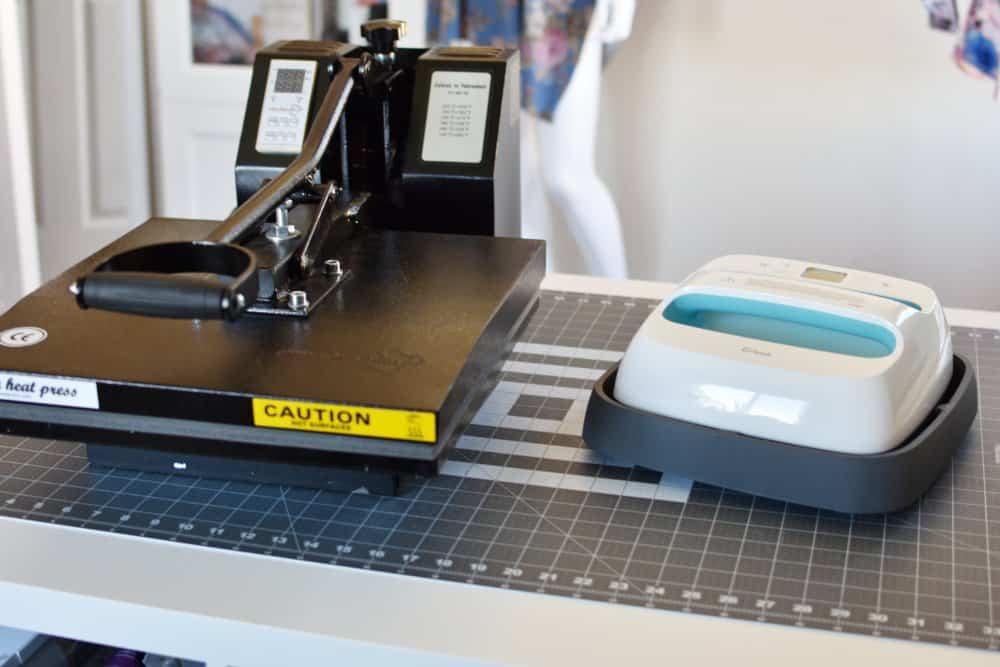
3.) Inkjet Printer:
The inkjet printer is among the best T-shirt printing materials. The machine is used to print the design onto the transfer paper.
When using the machine, it is important to use the right transfer paper i.e., an inkjet printer paper so that you can get exactly what you want.
If you are considering using the digital heat press method, the Inkjet printer will come in handy, as this method will allow you to transfer printed designs from the transfer paper to the shirt.
This happens when you use the heat press machine. This material cannot be ignored when considering your best T-shirt printing materials.
To obtain excellent and quality results, a good quality inkjet printer is advised. Not only will it make your work neat and flawless, but it will also give your work a perfect finish.
No matter how big or minuscule a design is, a feature of a good printer is its ability to accommodate the various sizes of sheets and paper as this will allow you to work with a wide range of designs.
At times for better results, some printers require the use of the software. Just ensure that you get one, which is compatible with your printer, and you’re good to go.
4.) The Screen:
One of the important best T-shirt printing materials, which you will require for printing on T-shirts, is the screen. The screen is needed for screen prints.
Although they are used for different methods of printing, the functions of the screen are quite similar to that of the heat press.
Asides from screen prints; the main purpose of the screen is to make stencils. After these stencils are produced, they are then transferred onto the shirt, hence creating a design on it.
One of the cons of using a screen is that you will need a different one for each color you intend on transferring to your T-shirt.
More so, you will also need the screen to have a mesh count. The complexity of your design is dependent on the mesh count.
Thus, the higher the mesh count, the more meticulous your design will be.
For general printing, for instance, your mesh count should be anything between 15-160. But If you want to make a puff and athletic design, you will need a mesh count of 15 – 90.
The screen can be made out of a few different materials. If you would like to make your screen at home, then consider using strong and durable materials to make the frame.
You can choose either wood or aluminum for this purpose when it comes to the best T-shirt printing materials.
5.) Emulsion:
Since the screen is quite sensitive to light, you will need an emulsion. The emulsion is a liquid substance, which applies to the screens in order, reduces its sensitivity to light.
It is usually applied on the screen before use. Stencils are produced because of the hardening of the emulsion when it is exposed to light.
To apply the emulsion on the screen, you will require either a squeegee or a scoop coater. Ensure you have one of these close by when you are preparing for screen prints.
A hack to achieving an even and smooth transfer of your design or artwork on the T-shirt is to apply a thick amount of emulsion on the screens.
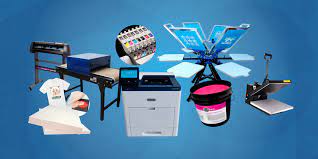
By so doing, it creates more space for the screen that in turn produces a better color saturation and printing result.
In addition, to prevent the emulsion from mixing, you will need to get a drying rack to dry the emulsion-coated screens.
6.) Exposure Unit:
The exposure unit is listed among the best T-shirt printing materials. The machine is used for curing the screen that has been coated with emulsion.
This equipment simply pinpoints light to the stencil instead of allowing the full light of the sun. However, the sun can act as a substitute if the exposure unit is unavailable.
The equipment resembles an oven and it has space where you can place the screens so that they absorb the light.
It is important to note that while placing them in the exposure unit, both sides of the screen should not touch each other.
7.) Washout Station and Water Source:
The washout station is used after curing the screen that has been coated with emulsion in the exposure unit.
It is mandatory to wash off the excess emulsion as failure to do that will make the screen get more cured when exposed to sunlight the next time.
This can result in foggy work and a damaged design on your T-shirt.
As long as there is a constant flow of water, your washout sink can be an improvisation or professionally made.
8.) Conveyor Dryers:
The final step in T-shirt manufacturing involves the use of the conveyor dryer. The conveyor dryer is one of the best T-shirt printing materials. We use it to dry the screen after it is washed clean.
Another function of the conveyor dryer is that it heats the ink on the shirt, thereby fixing it firmly on your T-shirt. The purpose of this is to make sure that the print is not easily removed from it.
Other best T-shirt printing materials
Asides from the necessary equipment you need for printing on your T-shirt, there are some other materials that you may need.
Although these best T-shirt printing materials are not as important as the others are, they can make your job a piece of cake. They include:
1.) Degreaser: Before applying emulsion on the screen, the degreaser is used to clean the surface of a screen.
2.) Tape gun: For a neater finish, the tape gun is used to cover up part of the T-shirt before printing. The sections covered are where the ink is not needed.
3.) Emulsion remover: The emulsion remover as its name implies is used to wash off the emulsion from a screen. With this, you can use the screen again.
4.) Flash cure unit: This is used to partly cure the ink. By so doing, you can have overlapping colors in a T-shirt.
5.) Soft Bristle Brushes: These are useful in washing off stains and when using a curable reducer, emulsion remover and degreaser.
6.) Curable reducer: The function of the curable reducer is to reduce the thickness of ink so that your designs can be clear and perfect.
7.) Spotting gun: The spotting gun is used alongside a spotting gun solution for getting rid of ink stains, plastisol drips, and fingerprints from a printed shirt.
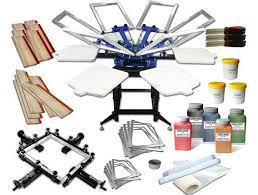
8.) spray adhesive
9.) film output device
10.) flash dryer
11.) temperature tapes, etc
In conclusion, printing on T-shirts is fun and allows you to be creative especially when choosing designs for your T-shirts.
With the right best T-shirt printing materials, you can enjoy a stress-free experience as they make your task easier.
If you are working with a budget, try to get the essential equipment first as they are more important than others are.
Furthermore, learning how to properly use these best T-shirt printing materials is as important as getting them.
It is necessary to know how they operate and how to maintain them so they can last long.


